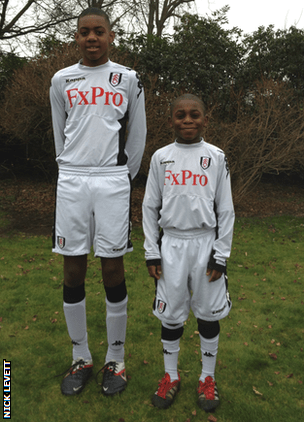
Motivation vs Emotional Activation: What’s wrong about Al Pacino’s “Any Given Sunday” Speech? – By Pablo Toledo
“Come on Pablo! you can’t touch that speech! it’s glorious, have some respect!”
I know, I know… we all love it. I do too. In fact it still gives me the goosebumps every time I see it. Moreover, I’m sure many decided to start coaching because of that speech, because of that amazing capacity to inspire that a coach can have, to get the best of every player… BUT… it has mistakes… I’m sorry! and I wouldn’t care about them if it wasn’t because its major mistake is one of the most common coaching mistakes I happen to see every day, and that mistake comes from not understanding the difference between emotional activation y motivación.
This reminds me of another real life situation. Back in 2008, the rugby world cup was played in France, and the opening game was Argentina vs France. Argentina was the underdog. So suddenly, right before the starting whistle, they start playing Argy’s national anthem and the camera shows the team, all of them united on a big hug, singing their lungs out, and many of these pretty intimidating big boys start crying out of emotion. Argentina, at the end, won the match, making it an unforgettable feat, and those players were praised all over the world for their passion and spirit. Everybody kept saying “that’s how it is man, why the underdog won, cause those guys were willing to die that day”. Beautiful, once again absolutely gorgeous, BUT… for the same reason as before, it might be wrong.
Motivation, on the other hand, refers to a psychological component that guides, orientates, determines a person’s behavior. Motivation is something relatively stable, and is divided in internal y external. External motivation refers to the cases in which you guide your actions towards an external reward. Let’s imagine that I tell a player “if you play really well this tournament I’ll buy you a TV”, that would be external motivation, as the TV is an external object that’s causing the incentive. Internal, on the other hand, refers to the desire that comes from within the person. I don’t coach for the money, but for soccer is my whole life passion. That passion comes from within, its an internal motivation, and as a good coach, you can find ways to explode that passion.
Internal motivation is a way more powerful tool than external motivation, as among other advantages, is more stable over time, but unfortunately, as most great things in life, is harder to accomplish, because it implies knowing the player at a deeper personal level. To make it happen, you will need to understand how to set expectations, goals, and how to recognize personality patterns, and that’s not easy (I’ll write about that some time in the near future).
Now, why can this ’emotional activation’ be a problem? Because it blinds you when it is excessive. Always remember this: no matter the sport you coach, the most important muscle is YOUR BRAIN! (Johann Cruyff said that) The difference between top players and good players is mostly not technical, or tactical, or physical, but mental. The best players are the best because they make the right decision more often than the others. Then, if you are overexcited, you are probably not thinking clearly, and that will probably lead to a lot of bad decisions, and bad decisions lose games. Sad, but real.
In fact, let me tell you a couple stories I read about this. After a couple games from that initial win that Argentina had beating France, one of the Argentine players got a yellow card at the very beginning of a game, and a few minutes later the coach took him out of the field. When he was asked why, he responded “I thought he was too accelerated”.
Another case. I read in one of the million books about Pep Guardiola’s Barcelona team, that once, to motivate (motivate…bad start…) the team before a game, he had someone prepare a video footage with images from the movie Gladiator and others of the players along the season, and even greetings from their families, etc. So the players go out to the field, some of them crying or notoriously moved, and everything looks great until… until they had a horrible first half… so Pep looks at an assistant coach and says “it was too much”, and had to calm the players down during half time. He realized he made a mistake with that video, right there.
Now, all of this does not mean, by any means, that you should not emotionally activate your players. FAR FROM IT. It means that you have to avoid the over-excitement that will blind their judgement. Bill Beswick, a British sports-psychologist that worked for a large number of Premier League teams, has a book named “Focused for Soccer” in which he describes the optimal level of “motivation” pre match, the “goal” in terms of the mental state to reach before jumping on the pitch. He says that you have to lead your players to a mental state in which they feel capable of winning the match (always focus on short term goals), BUT ONLY if they play at 100% of their potential. That’s why I recall this in my head as “Beswick’s 99% not enough rule”. This is a great rule of thumb because you are telling your players that they are capable of achieving a victory, but they need to give it all, to stay focused. You see, this is a good mental state: You can make it-Don’t Relax-Stay Focus. Encouraging but not blinding. So when you are home and play Any Given Sunday to get ideas on what to say on your inspiring speech next game, make sure you’re not thinking of the movies but planning your words to lead your players to the right mental state.
You know, Phil Jackson, in his book “Sacred Hoops”, says that he had the Chicago Bulls practicing zen meditation. Why? because it helps the person focus on what’s happening on the field and not get distracted by the surroundings or by the emotions. He says that its practice helps a person administrate the inflow of thoughts.
Interesting, isn’t it?
Well then, anyway, you know what? Sorry Al! You still killed it in that performance!









